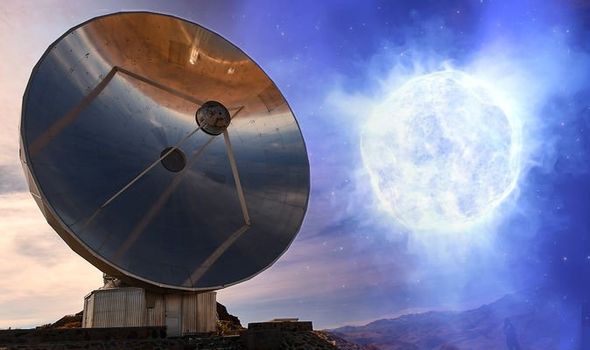In 2019, scientists witnessed a giant star that was 2.5 million times brighter than the sun and disappeared without a trace. The star's mysterious disappearance may suggest a new way of star death that is beyond the current scientific community' understanding, the cause of which has not yet been confirmed.

Now, in a new paper published in the royal astronomical Society monthly journal on June 30 this year, researchers are trying to offer several possibilities to explain why the star disappeared. One of the obvious features: The researchers wrote that perhaps the giant star collapsed directly and formed a black hole without going through the process of exploding — a truly "unprecedented" star death behavior.
Pale blue expanding spheres
Located about 75 million light-years from Earth, the star was studied in depth between 2001 and 2011. The expanding sphere glowing blue around it indicates that the giant star is nearing the end of its life and that its brightness is prone to unpredictable changes. Stars like these are rare, and so far they are a tiny minority in the universe. In 2019, researchers used very large telescopes to learn more about the changes in blue light, only to find that the star had completely disappeared.
Large telescopes
Usually, when a star much larger than our sun reaches the end of its lifespan, it explodes into a huge explosion and then forms a "supernova." These explosions are easy to spot because there is ionized gas and powerful radiation in all directions around the star, and it exists for up to several light years. After the explosion, the dense nuclei of the remaining stellar material could collapse into a black hole or neutron star, two of the largest and most mysterious objects in space.
But the star didn't leave that radiation behind, it just disappeared out of thin air.
Surrounding radiation
To study this mystery, the researchers reviewed previous observations of stars in 2002 and 2009. They found that the star experienced an intense burst period during this period, discarding large amounts of stellar material at a faster rate than usual. The researchers wrote that because of experiencing many such outbreaks, they emitted light brighter than usual. The team says the outbreak could end sometime after 2011.
black hole
This could explain why stars appeared so bright in early observations, but still doesn't explain how stars disappeared. One explanation could be that the star's color dimmed considerably after an explosion and was then obscured by thick cosmic dust. If this is the case, then the star may reappear in the future.
The stranger and more exciting explanation is that stars never stop erupting, but collapse into black holes without exploding. This is a very rare phenomenon. Given the mass of the star before it disappears, it could produce a black hole that is 85 to 120 times the mass of Earth's sun, but without the formation of a visible "supernova," how is that possible? Inconsistent with the previous scientific community's consistent star death process. So, this is still an unresolved issue that needs to be further observed.
Original source: express